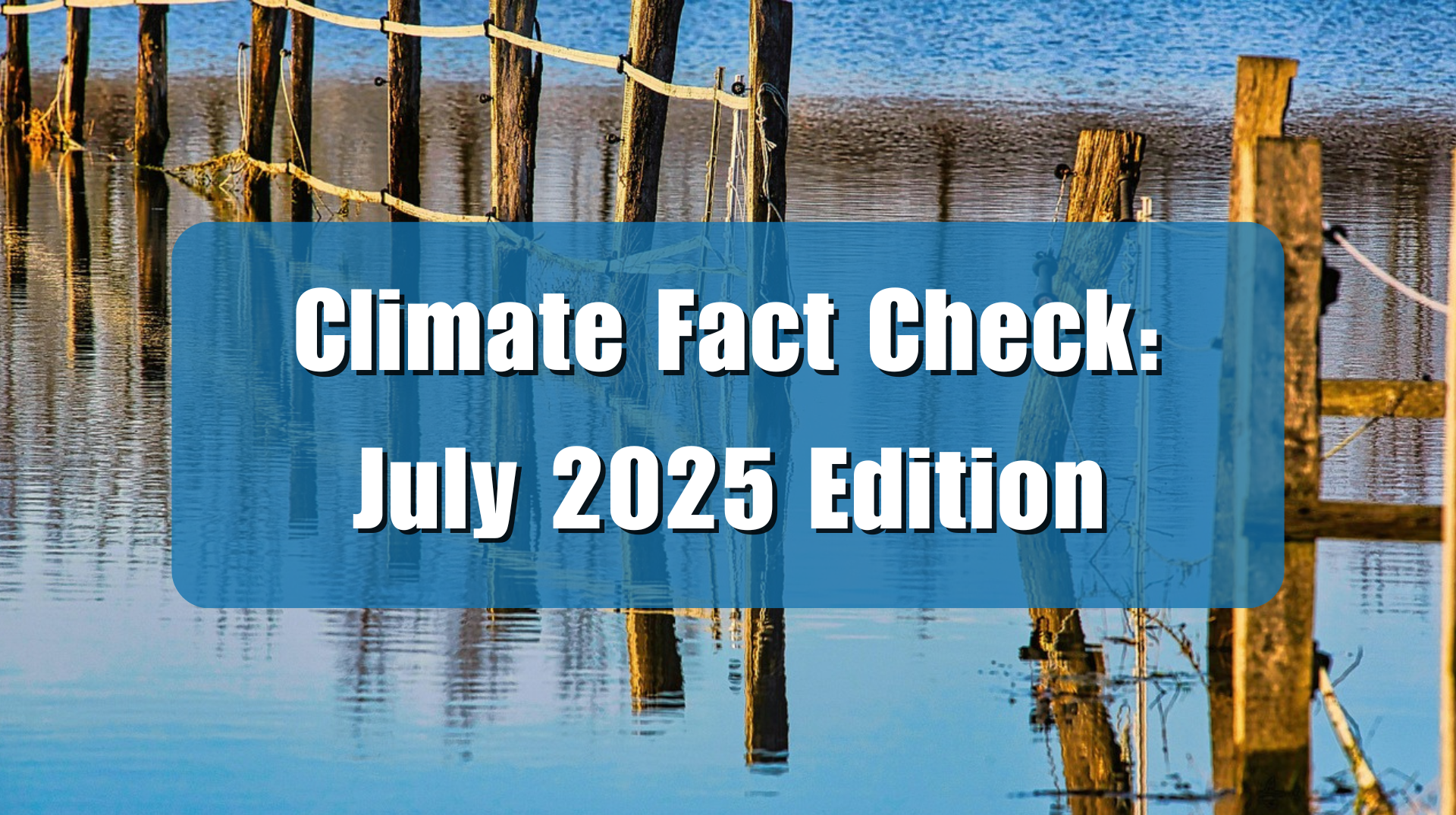There is a lot of press being generated this week over a new paper titled “Intergenerational inequities in exposure to climate extremes” (paywalled). Real-world data suggests this is a completely false prediction. Today’s youths are in fact likely to face less hunger, have higher standards of living, be healthier and live longer, with fewer environmental extremes having less disruptive effects on their lives.
The Washington Post (WaPo) covered the new paper with the headline, “Today’s kids will live through three times as many climate disasters as their grandparents, study says.”
WaPo writes:
If the planet continues to warm on its current trajectory, the average 6-year-old will live through roughly three times as many climate disasters as their grandparents, the study finds. They will see twice as many wildfires, 1.7 times as many tropical cyclones, 3.4 times more river floods, 2.5 times more crop failures and 2.3 times as many droughts as someone born in 1960.
The study’s alarming claims are based on the worst-case scenarios of future conditions made climate model projections. The study ignores hard data on the minimal impact of recent climate change on weather conditions and society, it also fails to examine past responses to climate change. Indeed, the study seems less of a scientific exploration of the possible effects of future climate conditions under reasonably expected emission scenarios than political screed posing as science. The study and its press release are a call to action.
“Our results highlight a severe threat to the safety of young generations and call for drastic emission reductions to safeguard their future,” write the authors. “This impending reality has fueled a surge of climate protests and litigation led by young people worldwide.”
On the face of it, statements like this announcing a purportedly scientific paper are absurd; it reads like an opinion piece, and should be a red flag to anyone who thinks this is actual science, rather than advocacy disguised as science. Another red flag is that the abstract of the paper has just one sentence: “Young generations are severely threatened by climate change.” When a scientific paper states a certainty in the abstract, especially when it is only a single sentence, you’d think they’d have concrete proof. Instead, the authors only “proof” is extreme model projections out to the year 2100.
In this case the authors used “…analysis by combining a collection of multi-model extreme event projections with country-scale life expectancy information, gridded population data, and future global temperature trajectories.”
These projections are built on the same models used by Intergovernmental Panel on Climate Change (IPCC) in its Sixth Assessment Report (AR6). Yet, the scientists involved with operating these models were forced to admit, the newest generation of climate models produce “implausibly hot forecasts of future warming,” in the words of the journal Science.
In addition, other climate model studies clearly demonstrate projecting a single model projection into the future is fraught with uncertainty, with the projections becoming less certain the farther one projects into the future. Imagine combining several models and datasets and expecting a result that isn’t further amplified by the combined uncertainty within all the data and the models used to project the data out to year 2100.
By having so many parameters, models can be tuned to predict most anything. Noted mathematician John von Neumann once famously said, “with four parameters I can fit an elephant, and with five I can make him wiggle his trunk.”
Essentially, von Neumann was saying that the more parameters you have in any mathematical model, the more flexible and malleable the output will be, i.e., you can make it visualize anything you want.
The authors say six extreme event categories: wildfires, crop failures, droughts, river floods, heat waves, and tropical cyclones will be on the increase over the next 79 years.
Missing from their analysis, is the most important element against which to measure the probability of their projections being accurate: data describing what has happened so far while the planet has modestly warmed over the last century as carbon dioxide increased in the atmosphere.
Since the 1920s, atmospheric carbon dioxide (CO2) concentrations increased from about 305 parts per million to more than 410 ppm today, and global average temperatures increased by about 1°C. Yet globally, as seen in Figure 1, the individual risk of dying from weather-related disasters declined by 99 percent and is approaching zero.

No clearer indication could exist that as the planet has warmed, deaths have actually decreased over the last 100 years. This is exactly the opposite indication of the “Intergenerational inequity” study suggesting that more wildfires, crop failures, droughts, river floods, heat waves, and tropical cyclones will be in our future, affecting our children and grandchildren, and presumably causing more deaths.
Data shows rather than extreme events increasing as the Earth as warmed, they have decreased. Each of the extreme weather events the Intergenerational Inequity study says will get worse, were actually worse in the past, when the planet was cooler and carbon dioxide levels were lower.
For wildfires, our Climate at a Glance: Wildfires shows a significant drop in burned area over the last century. Wildfires are far less frequent and severe than was the case throughout the first half of the 20th century as shown in Figure 2.

Using real-world data to look at what has happened as the planet has modestly warmed, we find the same pattern for crop failures, droughts, river floods, heat waves, and tropical cyclones. These extreme weather events were either less severe or common in the past or display no trend at all as the Earth has warmed.
There is more. The IPCC’s AR6 report says looking at past data, they could find no indication of climate-related increases in many of the indicators modeled in the “Intergenerational inequity” study.
Climatologist Dr. Roger Piekle Jr. writes of the IPCC AR6 report, saying,
“These conclusions of the IPCC, … indicate that it is simply incorrect to claim that on climate time scales the frequency or intensity of extreme weather and climate events has increased for: flooding, drought (meteorological or hydrological), tropical cyclones, winter storms, thunderstorms, tornadoes, hail, lightning or extreme winds (so, storms of any type).”
When examining real-world data versus the modest warming for the past century there’s been no measurable increase in weather catastrophes as the study claims. The IPCC acknowledges this.
Accordingly, the only conclusion one can draw concerning the “Intergenerational inequity” study is that it’s not only wrong, but, given the highly opinionated statements made within the study, it is little more than advocacy disguised as science. Or, to use another word: propaganda, defined as:
“Information, especially of a biased or misleading nature, used to promote or publicize a particular political cause or point of view.”

























Never mind that these “climate disasters” are the same local and regional weather events that have occurred throughout my lifetime (I turned 69 yesterday). I grew up in and spent my first 56 years in Oklahoma City, where tornadoes, flash floods, and much more severe thunderstorms, etc. have occurred all my life, long before anyone ever heard of “global warming.” I have seen tempertures up to 115 in late summer in Oklahoma City, winter days as frigid as -10 and below, and real thunderstorms in which lightning strikes were frequent and caused fires. I have seen straight-line winds powerful enough to knock buildings down.
In 2009, I moved to Seattle and was immediately pleased to find a mild, pleasant microclimate here. I laughed out loud at my first Seattle “thunderstorm,” which consisted of a single lightning strike! Similarly, the intermittent drizzle that Seattilites call “rain” is quite amusing, as well. Then there are the laughable standards of what passes for “hot” and ‘cold” in Seattle. Our recent summer “heatwave,” blamed on “global warming,” of course, had a single day with an afternoon high of 106. That was the ONLY day this summer when the temperature reached triple digits.
Now that autumn has begun (sort of. No overnight lows in the 30s, yet), they’re whining about it being too “cold” when it’s merely cloudy and in the 50s.
Oh, I forgot about the Seattle Times article, in August, written by a woman who referred to autumn as “The Big Dark,” as she is one of the nuts who wants Daylight Savings Time to be declared perpetual. There are actually people here who believe Daylight Savings Times somehow creates additional daylight! Government is powerful, alright, but I don’t think they’ve quite figured out how to change the physical relationship between the Earth and the sun.